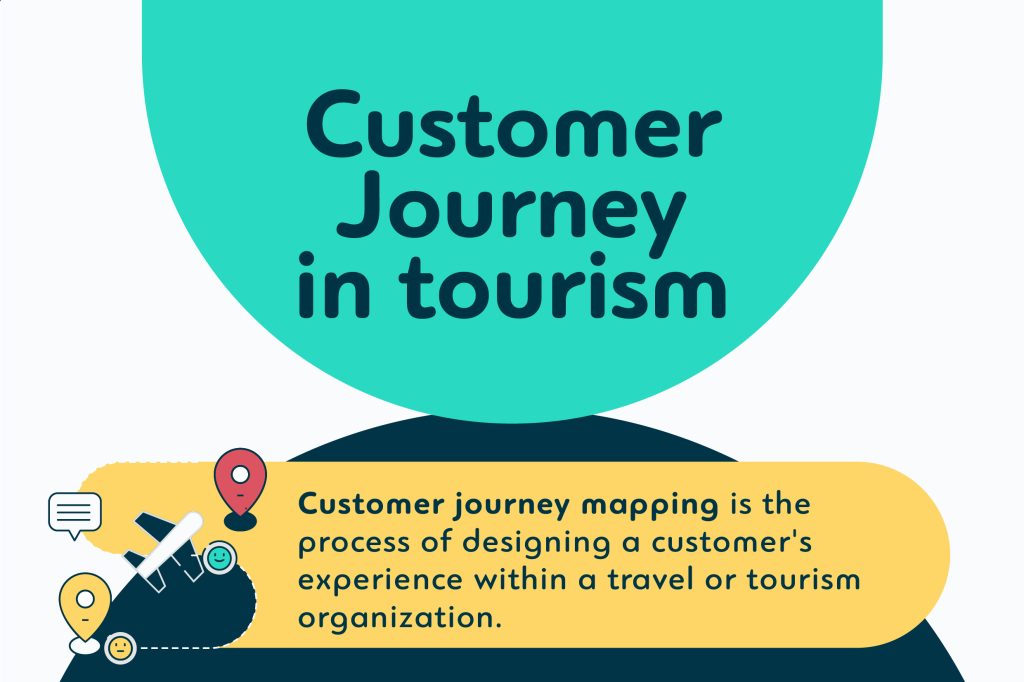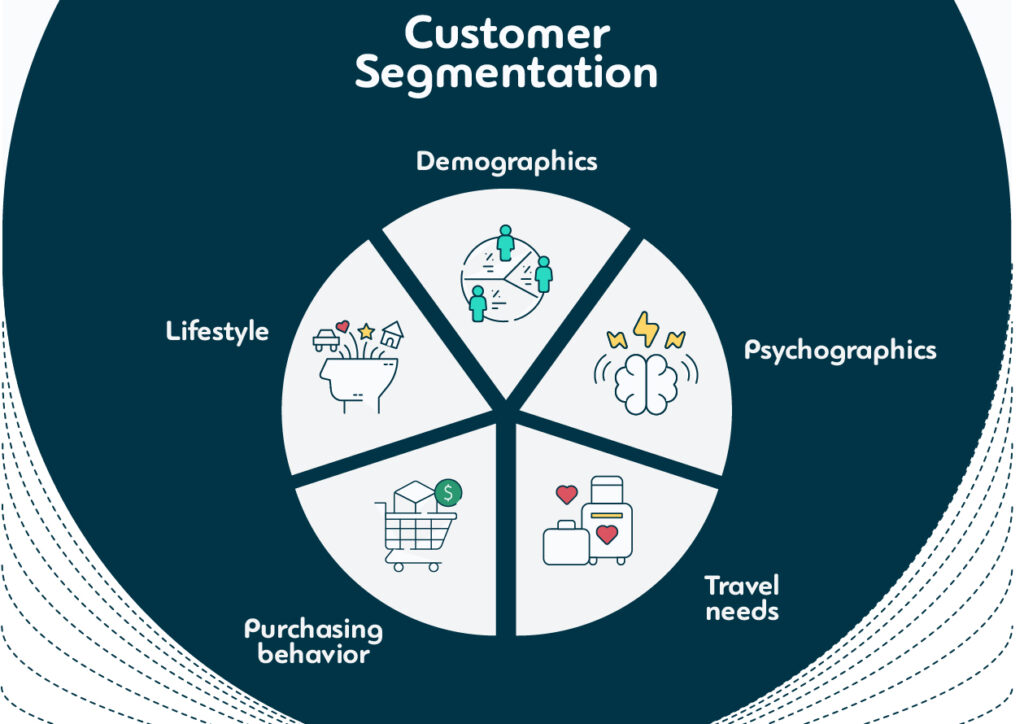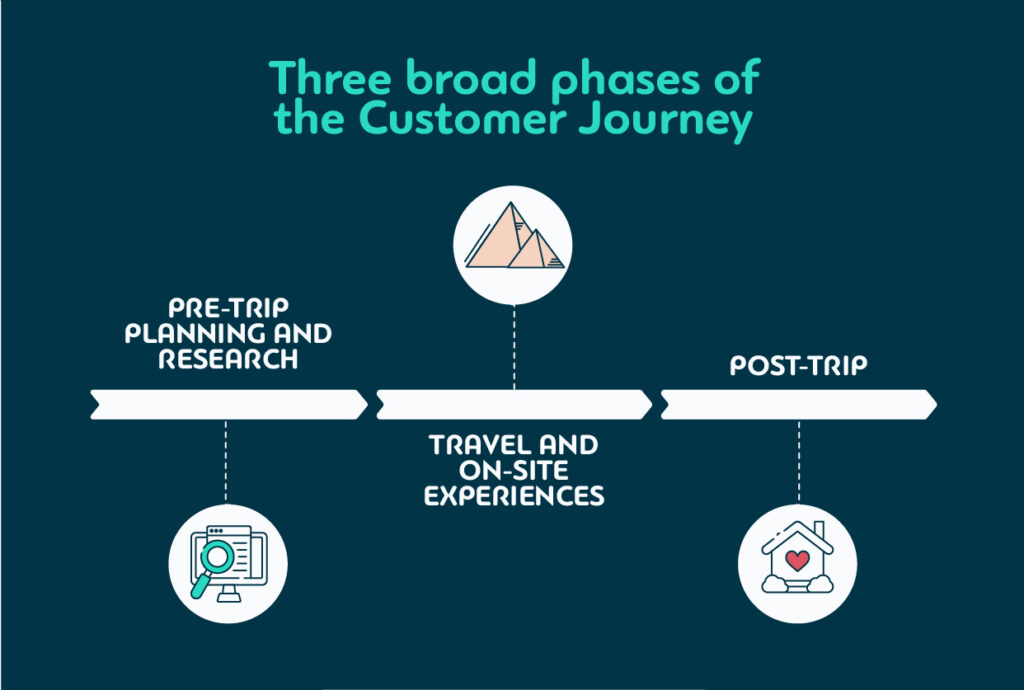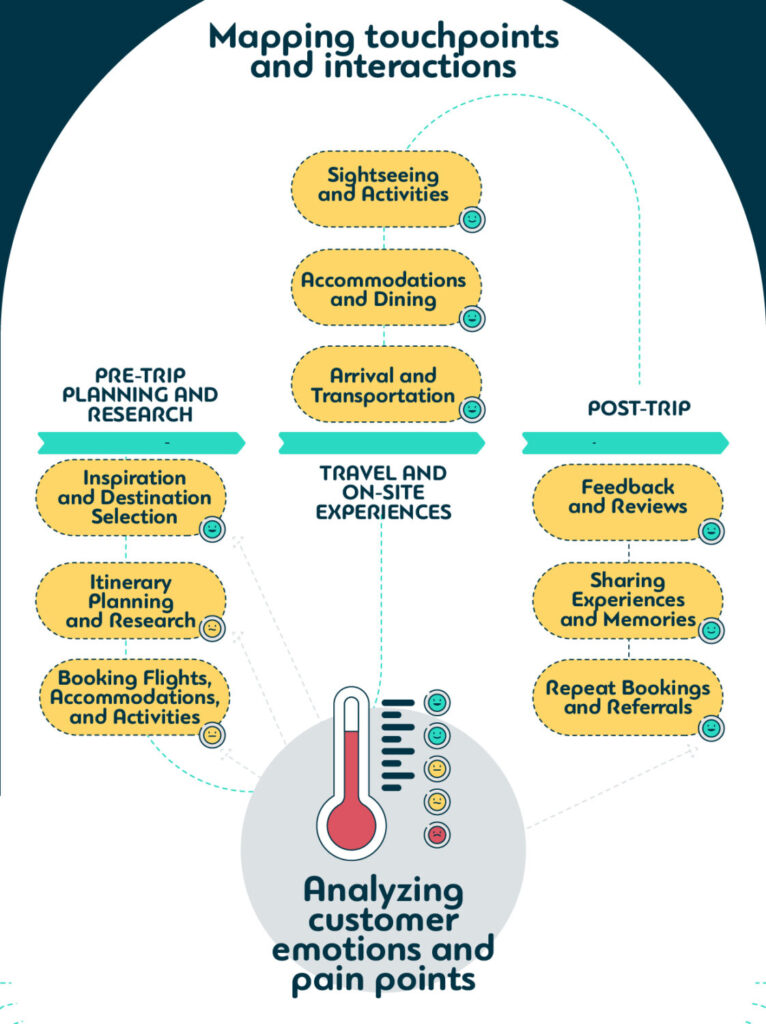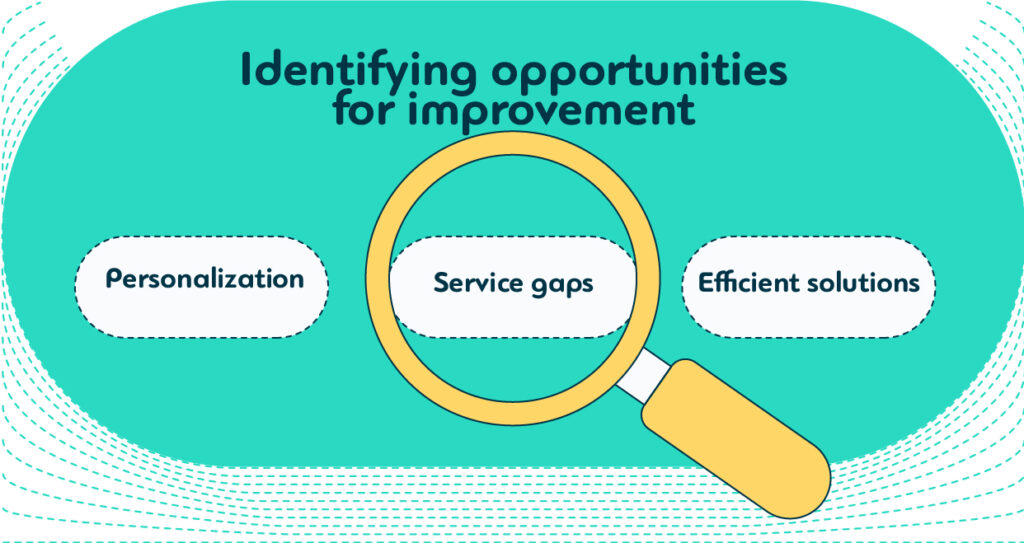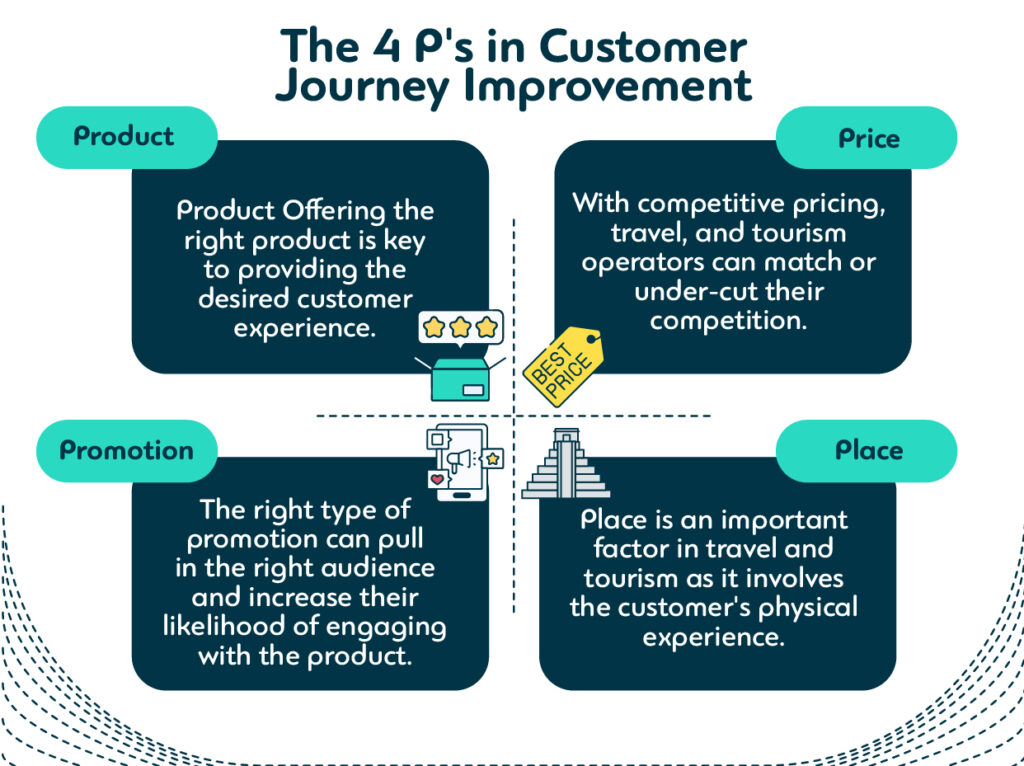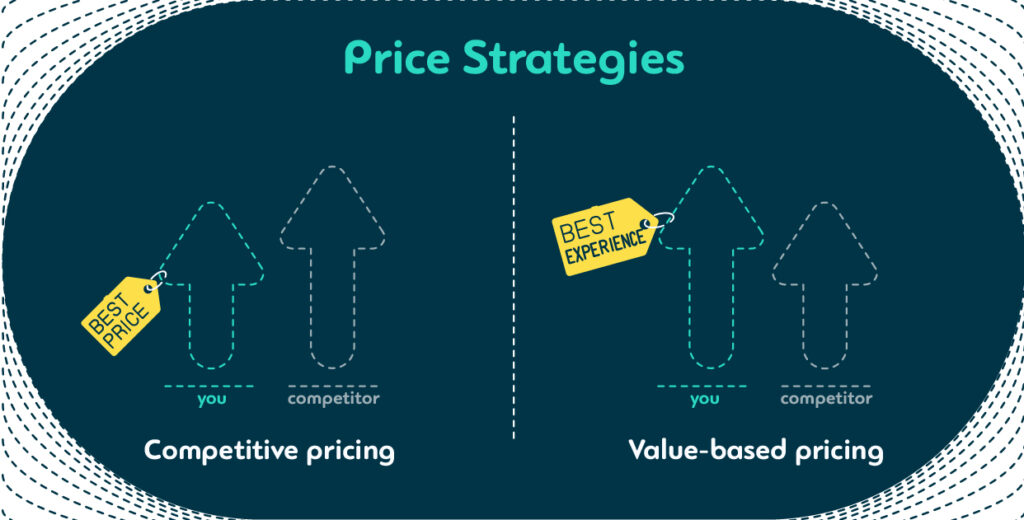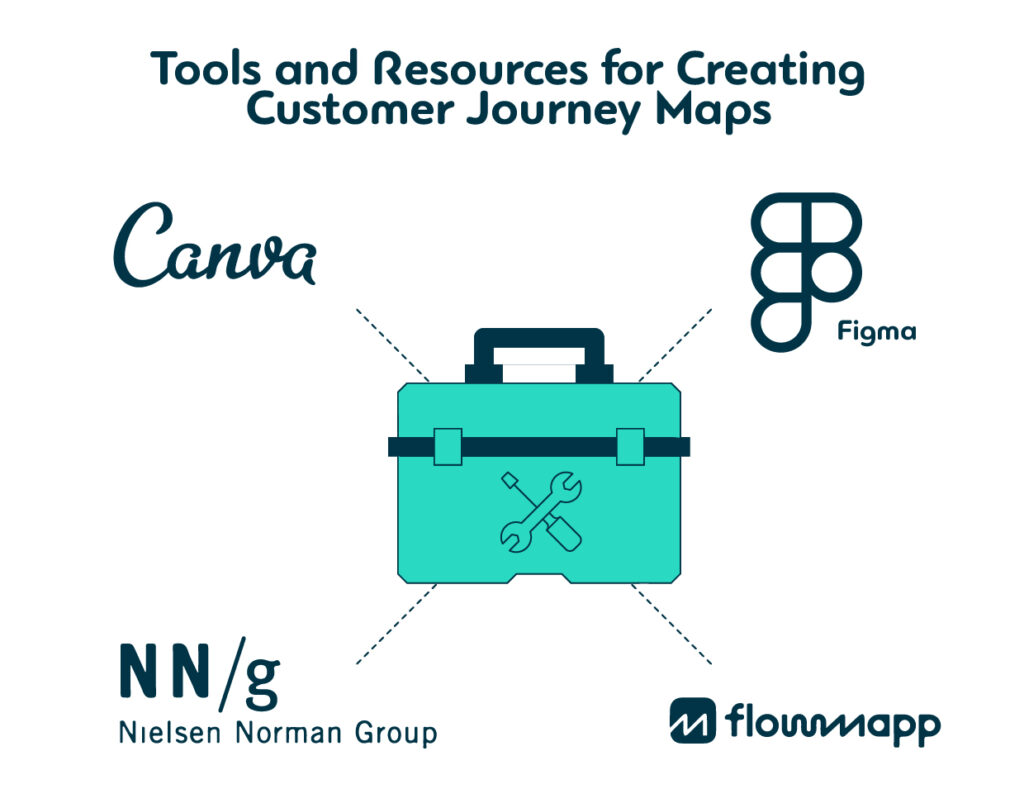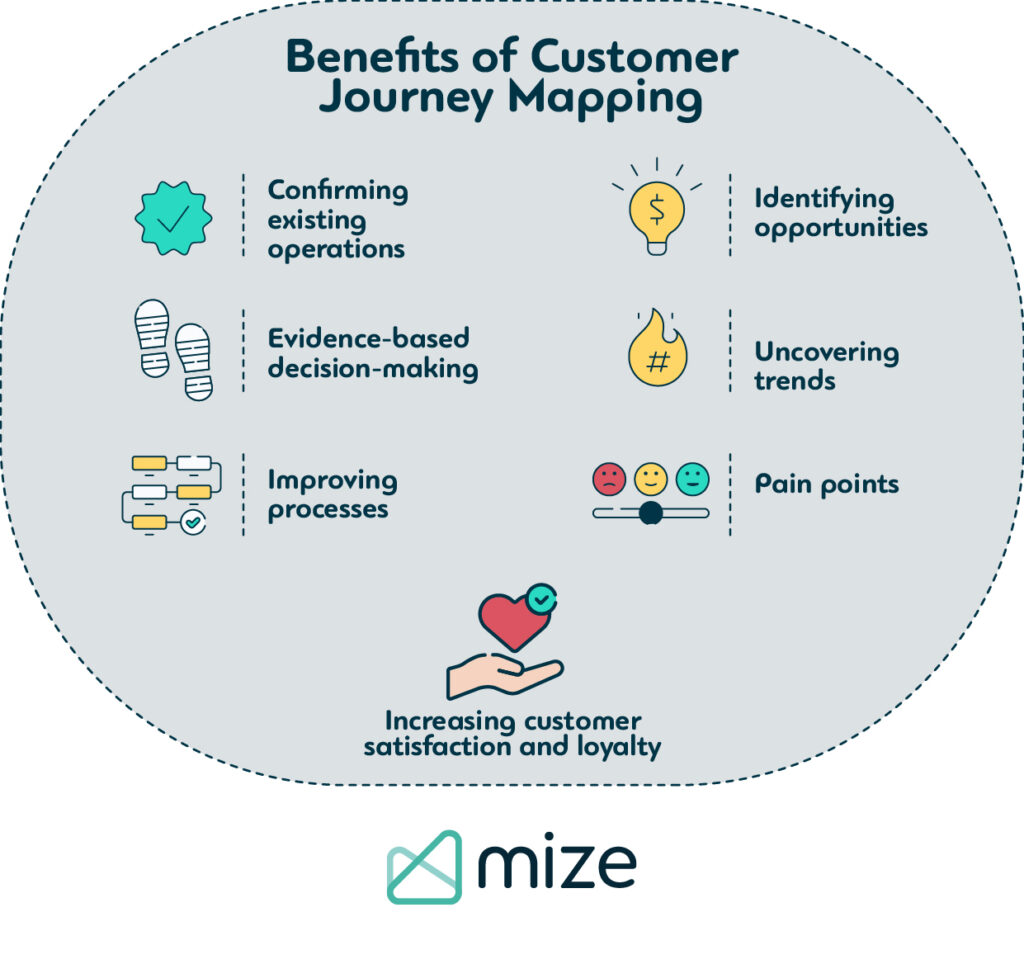This is the Way to Create Memorable Customer Journeys in Travel and Tourism

- What is Customer Journey Mapping?
- Customer Journey Mapping in Tourism
- What Is the Typical Customer Journey in the Travel Industry?
- Steps to Create a Customer Journey Map
- The 4 P's in Customer Journey Improvement
- Tools and Resources for Creating Customer Journey Maps
- Implementing changes and improvements based on insights from customer journey maps
- Conclusion
- Frequently Asked Questions (FAQs)
The travel and tourism industry is an increasingly competitive space, with customers expecting more personalized and memorable experiences from their trips. With the rise of technology and social media, travelers have greater access to information and a wider range of options than ever before.
Journey mapping offers travel agencies a way to gain a deeper understanding of their customers’ travel experiences. This allows them to proactively design services that meet their needs and create a positive and lasting impression in the minds of their consumers.
In this blog post, we’ll examine the different stages of this journey more closely. We will also discuss how businesses can use this approach to stand out.
What is Customer Journey Mapping?
Let’s first start off by defining what a customer journey map is.
Customer journey mapping is the process of designing a customer’s experience within a travel or tourism organization. This process illustrates the various stages a customer goes through throughout their journey with your brand, product, or service.
Service design is a method of designing services in a way that puts the customer’s needs at its core. This method lets travel companies consider every aspect of the customer journey, from the initial touchpoint to the end.
Customer Journey Mapping in Tourism
A customer’s traveling process can be complex and multi-faceted as it involves interacting with various service providers across multiple touchpoints, such as airlines, hotels, and activities.
Zendesk conducted a customer experience trend report and found that “61 percent of consumers would switch to a company’s competitor after just one bad customer service experience.”
That’s why it is crucial to map out their exact journey. Companies are better equipt to meet their needs and expectation and are more likely to find an increase in sales, satisfaction, and loyalty.
Additionally, at the onset of the mapping journey, you can gain insights into what is working, what needs to be improved, and where there are growth opportunities.
What Is the Typical Customer Journey in the Travel Industry?
A typical customer journey in the travel industry can be divided into three broad phases: pre-trip planning and research, travel and on-site experiences, and post-trip.
1. Pre-trip Planning and Research
The pre-trip planning and research phase is crucial for travelers as they decide on the destination, plan their itinerary, and book their travel arrangements.
1. Inspiration and Destination Selection
The first step in the pre-trip planning phase is selecting a destination. While various factors (season, budget) influence a traveler’s decision to visit a specific location, there are a few things that travel companies can do to inspire people to travel to their destination.
Companies can gather information by surveying or interviewing existing customers and uncovering what got them inspired to visit the destination in the first place. This will provide invaluable insight into what kind of content and experiences travelers are looking for when selecting a travel destination.
Dovetail is a customer insights hub that helps gather insights from various customer touchpoints, such as surveys, interviews, and product feedback. The tool enables companies to rapidly comprehend customers’ experiences, pinpoint where they lose customers, and identify opportunities to boost conversion and encourage repeat business.
Based on the data they collect, tTravel companies can create engaging content that captures the beauty of their destination and entices people to visit. They can also reach out to influencers and bloggers who can help spread the word about the location and its attractions.
2. Itinerary Planning and Research
The next step involves researching and planning their itinerary. From the type of attractions they want to visit to the activities they’d like to do, travelers need to have enough information to make informed decisions.
Travel companies can provide helpful information by presenting detailed travel guides, sharing user reviews and experiences, or offering valuable advice through their customer support teams.
According to Tripadvisor, “34% of American travelers said that it’s more important now than before the pandemic that they choose a destination where they can immerse themselves in “authentic local experiences.”
3. Booking Flights, Accommodations, and Activities
The next step is booking their travel arrangements, including flights, accommodations, and activities.
Google Travel Insights is a free tool that provides comprehensive insights into travelers’ travel patterns and preferences worldwide. Those in the tourism industry can gain detailed information regarding changes in travel demand, destination popularity, and booking trends.
According to recent data, 43% of Americans find booking travel to be an unpleasant experience. This suggests a gap in the industry that can be addressed through customer journey mapping.
Travel companies can facilitate this process by providing the necessary tools to simplify and speed up the booking process. This may include creating a user-friendly website or offering competitive prices to drive conversions.
On average, travelers visit travel sites 95% of the time after booking. This means there is an opportunity to meet customers where they are in the purchasing journey and create an experience tailored to their needs.
Taking a look at the website and social analytics can also help understand the behavior of users. Whether it be the bounce rates, traffic sources, or abandoned carts – these metrics can help identify what’s working and what isn’t.
2. Travel and On-site Experiences
The travel and on-site experience phase is where customers experience the destination and all that it offers. From the moment they arrive to the things they do while there to the time they leave.
1. Arrival and Transportation
The first step in the travel experience phase includes airport pick-up, transfers, and getting to the accommodation. This can be stressful as travelers arrive at a foreign location and get their bearings.
This is because the tourism industry is fragmented, and similar services interlink. For example, you book a hotel, and the hotel suggests a transfer service from the airport.
To make this process smoother, companies could share helpful information before the customer arrives. This will make it easier for them to navigate to their accommodation and around the area. Additionally, asking customers when they arrive, how their experience was, or creating a system to collect feedback about their experience can help you identify pain points in the process.
2. Accommodations and Dining
The next step involves where travelers stay and the dining options available. Accommodation and culinary experiences are crucial aspects of every traveler’s unique experience, as their needs and requirements vary.
This is where tapping into your target audience’s unique needs comes in handy to tailor an experience to their specific desires. For example, someone staying at an Airbnb will expect different things compared to someone staying at a hotel.
Booking.com found that travelers prioritize 34% of their travel spend on restaurants, 32% on accommodation, and 22% on attractions.
Here lies another opportunity to provide customers with additional value and upsell them on different packages and experiences. For example, a hotel with a restaurant on-site can offer guests discounts on their dining experience. Similarly, an Airbnb or hotel could recommend local restaurants, bars, or nearby activities.
3. Sightseeing and Activities
The next step in this process is where travelers get to explore the destination and experience its culture and attraction.
As consumer behavior and habits evolve, travelers increasingly seek unique and immersive experiences that add to the overall memorable aspect of their trip. This is leading to a need for a more connected customer journey.
Tourist attractions like theme parks, museums, and cultural sites offer memorable experiences. However, they also provide long lines, expensive tickets, and limited availability.
Customer journey mapping can help companies identify when these pain points arise and strategize ways to optimize the customer experience. This can include offering pre-booking options, loyalty programs, and VIP packages depending on the customer’s pain points and desired outcomes.
3. Post-trip
The post-trip phase is where customers provide feedback on their experience and share it with others. This is a crucial phase in the customer journey as it can influence repeat bookings, referrals, and future sales.
1. Feedback and Reviews
Travelers have high expectations for travel due to its cost and short duration. They anticipate that businesses will prioritize their feedback and address their concerns. Additionally, they want to share their experience through reviews (whether good or bad) to help others make informed decisions.
Post-trip assessments could be used to further refine the customer journey map by allowing customers to rate their overall experience and providing feedback on what worked well or needs improvement.
Google, TripAdvisor, and Yelp are some of the most popular review sites. Businesses can use these to monitor their customer feedback and address any complaints or issues customers may have. Additionally, companies can use review sites to promote positive customer experiences, as reviews often appear at the top of search engine results.
Customers don’t want to hear from a brand how great they are; they want to hear from their customers. As such, gathering and leveraging customer reviews and testimonials is essential. This type of social proof is a great way to build trust and credibility with potential customers.
2. Sharing Experiences and Memories
Offering customers an outlet to share their experiences and memories with friends, family, and social media can help grow brand visibility and loyalty. Through platforms such as TripAdvisor, customers can rate experiences and post pictures of their journey.
By tapping into shared experiences, brands can create a greater sense of community with their existing and potential customers. This communal interaction and brand connection can help brands create a more interactive relationship with their customer base.
The greater user sentiment, the better your customer mapping journey is aligned.
Customer journey mapping aims to gain a more profound comprehension of customers’ experiences with a brand. This allows needs to be met consistently, leading to the formation of unique and lasting memories. Creating unforgettable memories and tapping into their emotions is crucial in establishing a long profitable relationship.
3. Repeat Bookings and Referrals
To increase sales and brand loyalty, it’s important to maintain a relationship with customers after their trip by providing excellent customer service and following up with them. This can encourage them to book again and refer your business to others.
Companies can remind their customers why they bought from them in the first place. There are many ways to go about this, but the most common is offering loyalty programs, sending emails with special promotions or discounts on their next trip, and even giving referral incentives.
For example, an online travel agency can send a yearly email (similar to Spotify Wrapped) and showcase each customer’s unique travel highlights for that year.
It can include their most visited countries and cities, let them know how many hotels they stayed at, or how many plane tickets they bought. This email could also include a personalized recommendations section with ideas on where they could travel next.
It costs 5x more to acquire new customers than to retain existing ones. That is why it is so important to understand your buyer’s needs and meet them consistently. Otherwise, you’ll be left with churning customers that never come back.
Steps to Create a Customer Journey Map
There are four steps to creating a memorable customer journey experience in the travel and tourism industry that will attract and retain customers. You need a solid understanding of your customer’s journey to know where to improve your service.
Below are some steps to help you get started:
1. Identifying Target Customer Segments
The first step is identifying your target market. Customer segmentation involves grouping customers based on demographics, psychographics, lifestyle, purchasing behavior, and travel needs.
Meeting consumer needs, dreams, and desires is essential for a brand’s survival. Investing resources into understanding and segmenting your customer base will pay off as you create a personalized experience from when they begin their journey to when they leave.
The best way to gather this information is to speak directly with your customers and identify the following:
- What made them choose your product over everyone else?
- What triggered them to book?
- What are their expectations for an ideal customer experience?
- What hesitations did they have when booking?
- What are the critical factors that can either enhance or ruin their experience?
- What could have been improved in the overall experience?
This data can help you develop accurate customer profiles for each segment and better understand and meet their needs. This becomes invaluable as you move through the next steps in creating your customer journey map.
2. Mapping Touchpoints and Interactions
The second step is visualizing all the touchpoints and interactions your target customer will have throughout the customer journey.
As discussed earlier in the blog, the typical customer journey can be divided into three broad phases: pre-trip planning and research, travel and on-site experiences, and post-trip.
The first phase is crucial for standing out and securing a “yes” from potential customers. Failure to connect can result in losing businesses to competitors. Therefore, it is essential to deeply understand your target audience so that when they begin their pre-trip planning and research, your airline, accommodation, or activity is a no-brainer.
The second phase is the most intense and fulfilling part of the journey because this is when customers experience your product or service firsthand. During this phase, you can provide meaningful experiences to make your customer’s trip memorable. It is crucial to provide a great on-site experience that meets and exceeds their expectations.
The last phase is key for keeping customers engaged and satisfied. This is an opportunity to build loyalty and encourage repeat visits by sending them relevant content, surveys, or feedback requests that allow you to gauge their overall satisfaction.
Once mapped out, the touchpoints will help you understand the customer’s experience with your brand, making it easier to identify pain points and opportunities for improvement.
3. Analyzing Customer Emotions and Pain Points
The third step is analyzing the emotions and pain points that your customers experience in the buyer journey. Emotions play a vital role in the customer’s journey. This is because they are often the deciding factor in a customer’s decision to purchase.
Purchasing decisions of consumers are driven by emotions rather than logic. Therefore, it is important to understand how your customers feel at each step of their journey. Are they excited? Overwhelmed? Disappointed? Frustrated?
Customer feedback, such as surveys, social media insights, and reviews, is the best way to capture customer emotions. By identifying these emotional moments, you can concentrate on improving or resolving them. This will enable you to create personalized customer experiences that retain customer loyalty while building new leads.
4. Identifying Opportunities for Improvement
The fourth and final step enables you to combine all the data you have collected from the previous steps in the customer journey and build a comprehensive picture of the customer experience.
With this comprehensive view, you can identify which areas need improvement and begin working on strengthening them. Some approaches to improving the customer experience include: personalizing it, identifying gaps in service and communication, and providing more efficient solutions to customer needs.
Continuously adjust and enhance touchpoints to establish a strong brand presence in the minds of your customers.
The 4 P’s in Customer Journey Improvement
Travel and tourism professionals can turn a customer’s journey into an unforgettable experience. To do this, they must understand how to use the 4 P’s effectively.
1. Product
Product Offering the right product is key to providing the desired customer experience. Through customer journey mapping, travel, and tourism professionals can better understand the features and characteristics customers are looking for in a product or service.
Customer journey mapping allows brands to stay up-to-date, adapt, and anticipate customer preferences and expectations. It also helps to tailor and customize their offerings based on the experiences the customer will remember and return to.
2. Price
Price plays a major role in the customer journey. In order to maximize conversion and the lifetime value of customers, it is important to understand which price point provides a point of friction or hesitation. They can then establish a price that will encourage them to purchase.
Phocuswire found that “When it comes to making the booking, 46% of consumers say they are influenced by previous experience, 41% say reviews and 39% say price.”
There are two pricing strategies: competitive pricing and value-based pricing.
With competitive pricing, travel, and tourism operators can match or under-cut their competition. This helps to attract new customers and keep existing ones happy.
On the other hand, value-based pricing offers customers an experience that outweighs its cost. Offering add-on services or lower prices for repeat customers can significantly increase their satisfaction and loyalty.
3. Promotion
Using insights gained from journey mapping can enhance promotional efforts. This is because the right type of promotion can pull in the right audience and increase their likelihood of engaging with the product.
With journey mapping, marketers can identify opportunities to promote products and services in a targeted way that is meaningful to customers. This can be achieved through targeted marketing, advertising, influencer partnerships, and content marketing.
Promotional activities could be linked to emotional triggers. By uncovering the emotional triggers that your ideal customer experiences from the moment they discover their need, in this case, to travel to [destination], book a hotel room, and explore [attraction], marketers can create tailored messaging that resonates with them at a deeper level.
4. Place
Place is an important factor in travel and tourism as it involves the customer’s physical experience. When it comes to customer journey mapping, this is a brand’s opportunity to understand what their customers actually experience through their offerings firsthand.
Customer feedback, surveys, and interviews can be highly beneficial in collecting insights into their experiences to help you alter or improve the overall experience.
For example, a few customers who stayed at a hotel wrote negative reviews, all outlining that the hotel was dirty. This could be an opportunity to review the hotel’s cleaning staff and policies to improve.
To ensure customers’ return, creating a memorable customer experience is important. This can be done by providing their physical premises are well-maintained, accessible, and staffed correctly.
With the right combination of product, price, promotion, and place, travel and tourism professionals have the power to create a customer journey that is unique and unforgettable.
Tools and Resources for Creating Customer Journey Maps
Various customer journey mapping tools are available, and the type used typically depends on the organization and its specific needs. These tools range from spreadsheets and diagrams to mind maps or even physical walls covered in Post-it notes.
1. Canva
Canva offers a variety of customer journey templates that give a visual overview of the customer journey. Users can customize their designs with whiteboard tools and elements. The platform also allows users to download their designs or alternatively present them within the platform.
2. Figma
Figma is also a design platform and offers pre-built templates for customer journey mapping. Users can build their outlined paths and connect journey sections to create a comprehensive overview.
3. Nielsen Norman Group
The Nielsen Norman Group is a world-leading organization specializing in research-based user experience. Their customer journey map template is invaluable for those looking to get started with customer journey mapping. This template offers users a realistic approach to customer experience, allowing them to capture detailed customer journeys.
4. FlowMapp
FlowMapp offers UX tools, including design for customer journey maps. This platform allows users to create a visual representation of the customer journey, making it easier to track and measure customer behaviors. FlowMapp also offers the ability to build user flows, helping teams understand the customer journey from the initial steps to the completion of a purchase.
Implementing changes and improvements based on insights from customer journey maps
By utilizing customer journey mapping, travel agents and providers can:
- Confirm existing operations: Pinpoint areas working so you can double down on those efforts.
- Evidence-based decision-making: Move from assumption-based decision-making to evidence-based decisions.
- Improve existing processes: Make improvements to existing customer journey experiences and offerings.
- Identify new opportunities: Pinpoint opportunities to create more memorable customer journeys.
- Identify tourism trends: The more you speak to your target customer, the more you can identify travel trends you can then act upon.
- Uncover pain points and customer frustration: Remove unnecessary steps or friction points.
- Increase customer satisfaction and loyalty: This could include finding opportunities for more personalized services, offering new experiences, or capitalizing on demand to create the ultimate travel experience.
Conclusion
Creating an unforgettable customer experience is essential for businesses in the travel and tourism industry. Customer journey mapping is a powerful yet simple way to improve the customer’s experience.
Companies can stand out from the competition by understanding the typical customer journey to improve the experience and create long-lasting customer relationships.
Travel businesses can differentiate themselves from others by understanding customers’ needs and preferences, designing personalized journeys, and developing innovative solutions that empower customers to take control of their travel experiences.
Ultimately, customer-centricity is the key to delivering unforgettable experiences that will keep customers returning. With a clear customer journey roadmap and objectives in place, travel companies can ensure that their customers’ journeys are memorable for all the right reasons.
Frequently Asked Questions (FAQs)
Customer journey mapping allows small tourism businesses to better understand their customer segment. The better they understand their segment, the better they can tailor their products, messaging, and offerings to them.
This process enhances the customer experience because, when done correctly, customers feel seen, heard, and valued. By looking at the entire customer experience from arrival to departure, small businesses can identify areas to improve or opportunities to take advantage of.
Customer journey maps should be updated regularly. A good rule of thumb is to review and update journey maps every six months. This will ensure that the customer journey remains relevant, up-to-date, and optimized for customers’ needs.
Common challenges in implementing changes based on customer journey mapping insights include gaining internal buy-in, developing effective strategies for change implementation, and tracking progress.
Tourism businesses can measure the success of their customer journey mapping efforts by tracking customer feedback, monitoring changes in customer satisfaction, and analyzing performance metrics.
Subscribe to
our newsletter
Yay! You are now
subscribed to our
newsletter
Mize is the leading hotel booking optimization solution in the world. With over 170 partners using our fintech products, Mize creates new extra profit for the hotel booking industry using its fully automated proprietary technology and has generated hundreds of millions of dollars in revenue across its suite of products for its partners. Mize was founded in 2016 with its headquarters in Tel Aviv and offices worldwide.
Related Posts

Travel Niche: What It Is, How to Leverage It, Case Studies & More
14 min. Niche travel is one of the few travel sectors that have maintained their pre-COVID market growth. By catering to specific traveler segments, niche travel developed products around adventure travel, eco-tourism, LGBTQ+ travel, and wellness retreats. Take adventure tourism as only one segment of the niche tourism market. In 2021, it reached 288 billion […]
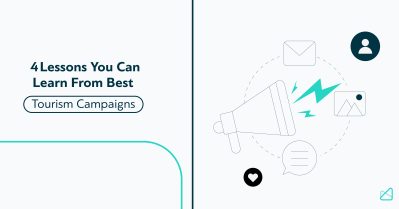
4 Lessons You Can Learn From the Best Tourism Campaigns
13 min. Businesses in the tourism industry rely heavily on marketing to generate leads and boost conversion rates. Tourism marketing is as old as tourism itself – and it always reflects the destination and service benefits relevant to the current travelers’ needs, wants, and expectations. In other words, tourism campaigns must constantly move forward, and […]

The Vital Role of Market Segmentation in the Tourism Industry
15 min. The tourism industry is an ever-growing and competitive landscape, presenting both challenges and opportunities for businesses operating within it. This is where market segmentation comes in handy. In this blog post, we will discuss what market segmentation is, the importance of market segmentation in the tourism industry, and how online travel agencies can […]
